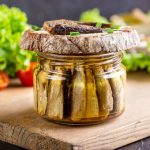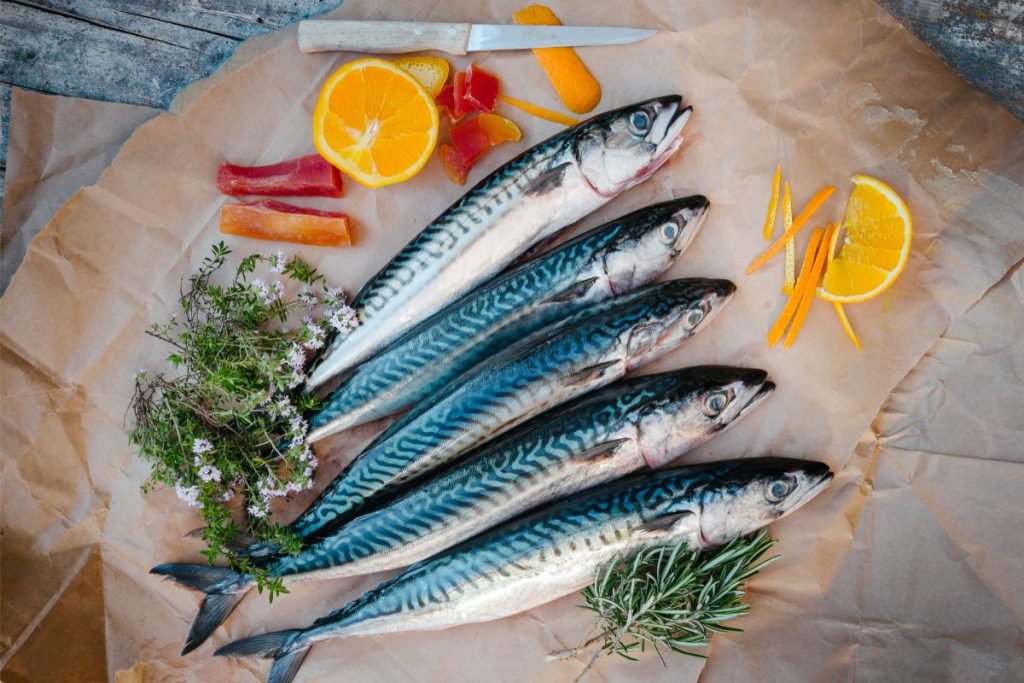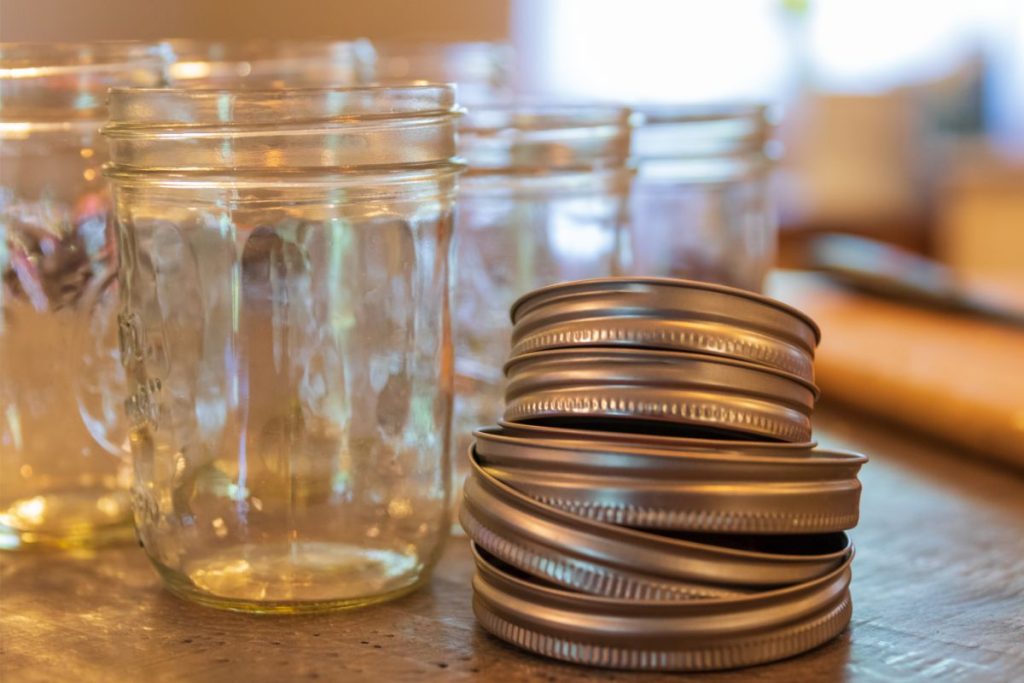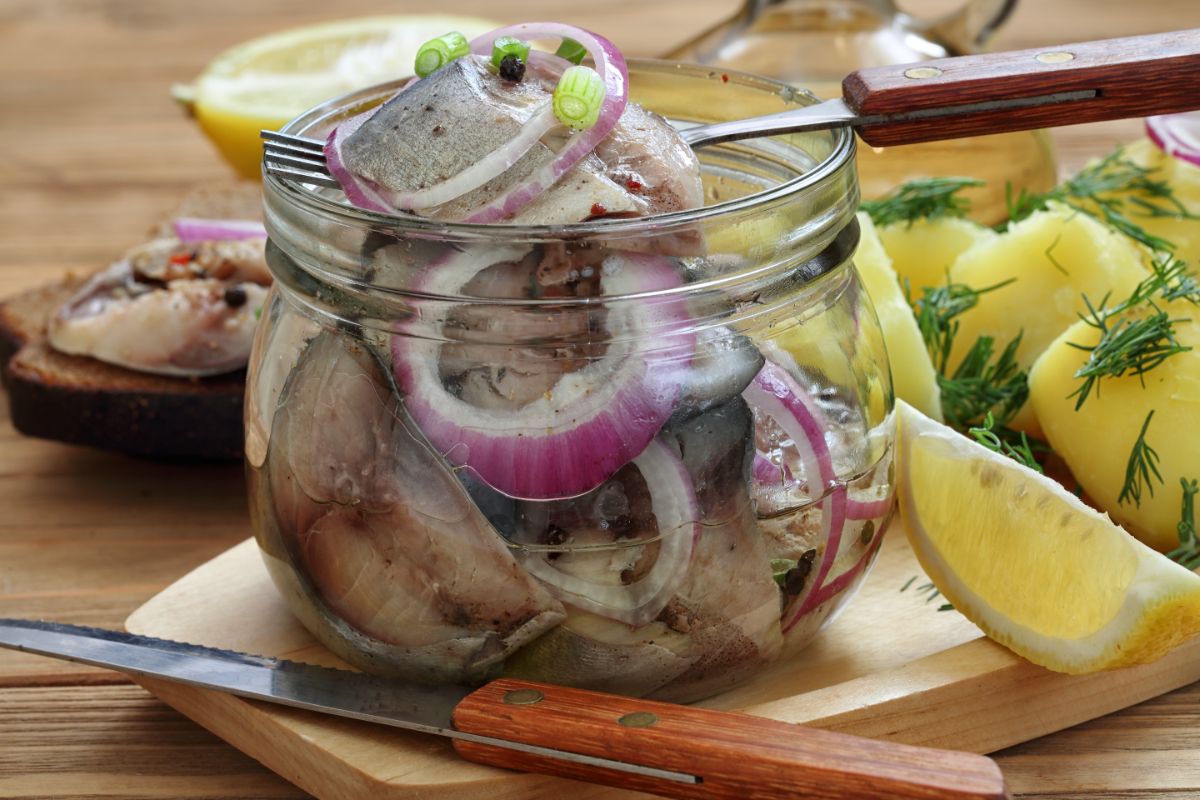When home canning mackerel, remove the scales, head, fins, and tails. Cut the fish into small fillets, and cold pack them into sanitized pint jars. Add 1-2 teaspoons of salt per jar and process in a pressure canner for 100 minutes.
What is the Best Way to Can Fish?
Pressure canning fish is the best way to safely can fish. Fish is a low-acid food, and studies have confirmed fish may contain high levels of harmful bacteria that can lead to botulism if not processed safely.
The National Center for Home Food Preservation and the USDA recommends a processing temperature of 240°F – 250°F to safely preserve fish. Water bath canners reach a high temperature of 212°F, which is not hot enough to eliminate the risks of botulism.
Print
Canning Mackerel Fish Recipe
- Total Time: 3 hours and 50 minutes
Description
This simple canning recipe is a perfect way to preserve your latest catch! Mackerel is a versatile ingredient, and having canned fish at home allows you to make quick weeknight dinners.
Ingredients
- Mackerel (fresh)
- Sea salt or canning salt
- Pickling spices (optional)
Instructions
- Eviscerate the fish to remove the internal organs and blood. Keep the fish cold in the refrigerator until ready to use. You may also use fresh, store-bought mackerel.
- Cut off the head, fins, and tails. Scrap the scales with a knife before thoroughly rinsing the fish under cool running tap water. Do not remove the bones, as they are rich in calcium.
- Cut the cleaned fish into 3 and 1/2-inch pieces, suitable for pint jars.
- Fill your jars with raw mackerel, placing the skin side next to the glass. Leave 1-inch headspace.
- Add 1 teaspoon of pickling salt per pint jar and add 1/2 tablespoon of your favorite pickling spices, as desired. Do not add liquids.
- Run a non-metallic utensil inside the jars to remove air bubbles.
- Wet a paper towel or cloth with vinegar and wipe the jar rims to remove grease and oil.
- Place the canning lids on the jars and apply the canning rings. Tighten appropriately until fingertip tight, taking care not to overtighten them.
- Put your pressure canner on the stove and ensure it is outfitted with a canning rack. Add 2-4 inches of water per the manufacturer’s instructions and heat the water.
- Transfer the jars into the pressure canner and set them on the canning rack. Cover the canner with the lid.
- Bring the water inside to a boil and allow the canner to release steam for 10 minutes.
- Allow the pressure to build to the recommended level per elevation, and process pints for 100 minutes:
Dial-gauge Pressure Canners:
- 0-2,000ft: 11 lbs
- 2,001-4,000ft: 12 lbs
- 4,001-6,000ft: 13 lbs
- 6,001-8,000ft: 14 lbs
Weighted-gauge Pressure Canners:
- 0-1000ft: 10lbs
- 1,001ft and up: 15lbs
Post Processing
- Once the processing time is up, turn off your stove. Wait for the canner to cool naturally and for the PSI to reach zero.
- Open the canner’s lid away from your face. Remove the hot jars using canning tongs or a jar lifter, placing them on a towel-lined counter.
- Allow the jars to cool undisturbed for 12-24 hours.
- Remove the screw bands and inspect the seals. Sealed jars have lids that do not flex up and down when pressed. For any unsealed jars, place them in a refrigerator and use them within 3 days.
- Label sealed jars with the contents and date of processing. Store the jars in a dry, cool place away from direct sunlight.
Notes
1 lb of fish is enough for 1 pint; a full canner load of 9 pints requires 9 lbs of fish.
- Prep Time: 30 Minutes
- Canning Time: 1 hour, 40 minutes
- Cook Time: 1 hour, 40 minutes
Nutrition
- Serving Size: 2 ounces
- Calories: 88 kcal
- Sugar: 0g
- Sodium: 215mg
- Fat: 3.6g
- Carbohydrates: 0g
- Fiber: 0g
- Protein: 13g
- Cholesterol: 32 mg
What Types of Fish Can Be Canned?
Some of the best fish for canning include shad, trout, steelhead, catfish, mackerel, northern pike, smelt, halibut, and salmon. Some kinds of fish, such as perch, walleye, and other pike types, are better eaten fresh or preserved by freezing.
Can Fresh Fish Be Canned?
Yes – fresh fish can be pressure-canned. Clean fresh fish thoroughly and refrigerate it at 40°F or freeze it for up to two days before canning it. Frozen fish may be processed using the pressure canning method after thawing it.

Can Fish Be Canned Without a Pressure Canner?
No. Red meat, poultry, and seafood are low-acid foods, and a pressure canner helps guarantee that bacteria are eliminated, reducing the chances of food-borne illnesses. Water-bath canning fish is not recommended.
How Long Does it Take to Can Fish?
Canning fish takes a processing time of 100 minutes for pint jars. This time does not include prep time or cooling.
How Much Salt Is Needed For Canning Fish?
Pints need 1 teaspoon of canning salt. You may adjust the quantity to your personal preferences, as the salt is for taste and not for preservation.
What Kind of Canning Jars Should You Use for Canning Fish?
The best jar size when canning fish is pint jars due to convenience and a reasonable processing time. Wide-mouth jars are preferred for canning fish and meat.

What is the Shelf Life of Canned Fish?
Home-canned fish has a shelf life of up to 5 years. However, the USDA recommends the consumption of canned goods within 12 months to enjoy the best texture and flavor. Store unopened jars in a cool, dry place away from direct sunlight and humidity. Keep opened jars in the refrigerator and use them within 5 days.

